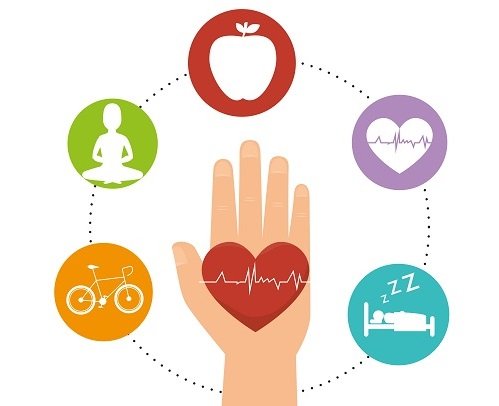Hemorrhoid Management: A Holistic Approach to Prevention and Relief
Hemorrhoids, also known as piles, are a prevalent condition characterized by swollen and inflamed veins in the anal canal and rectum. These vascular engorgements frequently manifest with symptoms including pruritus (itching), pain, and rectal bleeding, significantly impacting patient comfort and well-being. This guide outlines a comprehensive strategy incorporating preventative measures and management techniques rooted in established medical principles and evidence-based practices.
Etiopathogenesis and Risk Factor Modification
The development of hemorrhoids is multifactorial, primarily stemming from increased intra-abdominal pressure and venous distension. The Valsalva maneuver, frequently employed during defecation in cases of constipation, is a key contributor. Other significant risk factors, frequently cited in the literature, include prolonged periods of sitting or standing, pregnancy (due to hormonal changes and increased venous pressure), obesity (associated with increased abdominal pressure), and strenuous physical activity involving heavy lifting. Understanding these etiological factors is crucial for implementing effective preventative strategies.
Lifestyle Interventions for Hemorrhoid Prevention
Proactive lifestyle modifications play a pivotal role in both preventing hemorrhoid development and mitigating existing symptoms. The application of health behavior theories, such as the Health Belief Model, highlights the importance of patient education and self-efficacy in adopting these changes. The following recommendations are crucial:
- Optimize Hydration Status: Adequate fluid intake (minimum 2 liters of water daily) is paramount. Hydration promotes the formation of soft, easily passable stools, reducing straining during defecation and lessening venous pressure in the anal region. This aligns with the principles of gastrointestinal physiology related to stool consistency and transit time.
- Enhance Dietary Fiber Intake: Increasing dietary fiber intake (25-35 grams daily) is essential for promoting regular bowel movements. Fiber adds bulk to the stool, increasing its motility and reducing straining. Dietary sources, rich in soluble and insoluble fiber, include fruits, vegetables, whole grains, and legumes. This strategy directly addresses the pathophysiological mechanism of constipation, a major contributor to hemorrhoid formation.
- Promote Regular Physical Activity: Regular physical activity (at least 150 minutes of moderate-intensity aerobic exercise weekly), promotes gastrointestinal motility and reduces constipation. Increased physical activity also contributes to overall health and weight management, indirectly mitigating obesity-related risks of hemorrhoid development. The application of exercise physiology principles underlines the benefits of regular physical activity.
- Establish Regular Bowel Habits: Prompt attention to the urge to defecate is vital. Delaying defecation can lead to increased stool hardness and straining, exacerbating hemorrhoidal symptoms. This principle aligns with principles of visceral sensory function and the gastrocolic reflex.
- Optimize Postural Habits: Prolonged sitting or standing should be interrupted by regular breaks to encourage movement and improve venous return. This reduces prolonged pressure on the pelvic and anal veins. This intervention is based on principles of vascular physiology and venous circulation.
- Employ Safe Lifting Techniques: Proper lifting techniques (bending at the knees, using leg muscles) minimize intra-abdominal pressure increases, reducing strain on the anal veins. This is aligned with biomechanical principles of safe lifting and reducing strain on the musculoskeletal system.
- Maintain Optimal Anal Hygiene: Gentle cleansing of the perianal area with mild soap and water after each bowel movement helps prevent irritation and secondary infections. Avoid harsh soaps or scented wipes that can irritate the sensitive skin. This is a core tenet of wound care principles and preventing infection.
- Implement Appropriate Toilet Habits: Using soft toilet paper or moist wipes can minimize friction and reduce irritation. Gentle patting, rather than rubbing, is recommended for drying. This practice minimizes further trauma to the inflamed hemorrhoidal tissue.
- Adjust Dietary Habits: Limit consumption of excessively spicy foods that can exacerbate gastrointestinal irritation and potentially worsen hemorrhoidal symptoms. This addresses the impact of certain foods on digestive health and inflammation.
Symptomatic Management of Hemorrhoids
Several interventions provide symptomatic relief, and their selection depends on the severity of the symptoms. These approaches align with principles of pain management and inflammation control.
- Cryotherapy: Applying cold compresses to the affected area can reduce inflammation and provide temporary pain relief via vasoconstriction and reduction of edema.
- Hydrotherapy: Sitz baths (soaking in warm water for 10-15 minutes) can soothe pain and itching by increasing local blood flow and promoting relaxation of the anal sphincter muscles.
- Pharmacological Interventions: Over-the-counter topical treatments (e.g., creams, ointments containing corticosteroids or local anesthetics) can provide temporary relief from pain, itching, and inflammation. However, patients should always seek professional medical advice before using any over-the-counter medications.
Indications for Medical Consultation
While many hemorrhoid cases are effectively managed conservatively, certain presentations warrant prompt medical evaluation. These criteria align with established clinical guidelines for hemorrhoid management:
- Intense or unremitting pain
- Significant or persistent rectal bleeding
- Lack of response to conservative management
- Suspected infection (e.g., fever, purulent discharge)
A healthcare professional can provide a definitive diagnosis, rule out other pathological conditions, and recommend appropriate treatment strategies, including minimally invasive procedures if necessary.
Conclusions and Recommendations
Hemorrhoid management requires a holistic approach encompassing preventative lifestyle modifications and judicious use of symptomatic treatments. A multimodal strategy combining dietary changes, increased physical activity, and improved bowel habits can significantly reduce the risk of hemorrhoid development. While many cases resolve with conservative management, prompt medical attention is crucial for severe symptoms or those unresponsive to home remedies. Further research should focus on exploring the long-term effectiveness of various lifestyle interventions and developing more precise diagnostic tools for early detection. The integration of telehealth technologies could improve access to timely medical advice and guidance for individuals experiencing hemorrhoid symptoms.
Reader Pool: Considering the comprehensive approach outlined in this article, what additional lifestyle modifications or technological advancements do you believe could further enhance hemorrhoid prevention and management?






No comments yet. Be the first to share your thoughts!